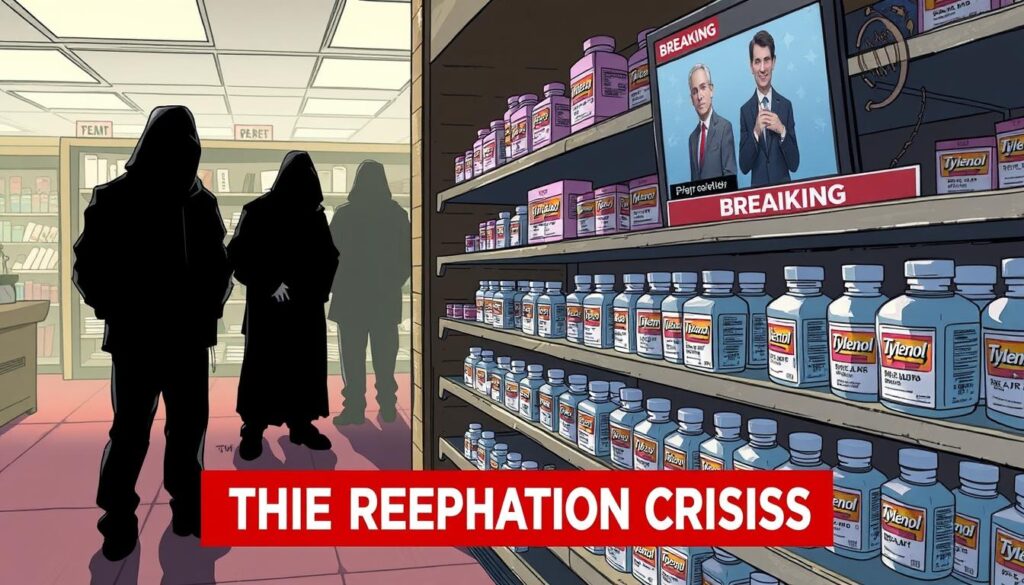Reputation crises can be tough, even for big brands. But, many companies have shown they can get through these tough times and come out stronger. This article looks at 10 big reputation management cases. We’ll see the challenges, strategies, and outcomes of these efforts.
These examples can help other companies protect and fix their reputation. Whether it’s Uber’s consumer backlash, United Airlines’ bad incident, or Cracker Barrel’s social media crisis, these crises can deeply affect a brand. Learning from these cases can help your business prepare for and handle unexpected issues.
This article will explore how companies like Johnson & Johnson and Pepsi handled their crises. We’ll talk about crisis communication, accountability, and fixing a brand’s image. By the end, you’ll know how to tackle your own reputation challenges and come out on top.
Proactive Reputation Crisis Response Strategies
Handling a reputation crisis well means being proactive. It’s about being open and quick in your response. You also need to show you’re accountable and take action fast.
Ask Reputation Return for a free consultation >>>
Being open means telling everyone about the problem right away. You should keep them updated and manage their expectations. Quick action helps stop bad news from spreading and keeps people trusting you.
Transparent and Timely Communication
Using your own channels is key. They let you talk directly to important people and control the message. Teaching reporters about complex issues can lead to fairer stories and a clearer view of your side.
It’s also important to correct any wrong information. Share accurate details with others. Having supporters can help show your side of the story.
Accountability and Decisive Action
Taking responsibility is a big step towards fixing your reputation. Don’t blame others or make excuses. Own up to the problem and say you’re going to fix it.
This might mean starting investigations, changing policies, or holding leaders accountable. Taking clear steps shows you’re serious about solving the problem and making sure it doesn’t happen again.
Ask Reputation Return for a free consultation >>>

Being proactive in your communication is very important in a crisis. Make sure your efforts are well-planned and consistent. This helps avoid making things worse.
Knowing how to use proactive and reactive communication is key to managing your reputation. Being ready and using proactive strategies can help you get through a crisis successfully.
Reputation Crisis Management Case Studies
Companies must act quickly to handle reputation crises. Two key examples are the Johnson & Johnson Tylenol crisis and the Chipotle E. coli outbreak.
Johnson & Johnson: Tylenol Poisoning Plight
In 1982, Tylenol packages were tampered with, causing deaths. Johnson & Johnson acted fast and decisively. They recalled all products, communicated widely, and introduced tamper-evident packaging.
This response not only saved Tylenol’s reputation but also set a new standard for corporate responsibility case study in crisis management. It showed the value of putting consumer safety and transparency first.
Chipotle: E. Coli Outbreak Ordeal
Chipotle faced a big challenge with an E. coli outbreak in 2015. It affected 19 customers in 7 states, hurting the brand’s reputation and trust.
Chipotle took steps to address health concerns, changed ingredients, and launched a big PR campaign. They also paid a $25 million fine, showing their commitment to fixing the crisis. These actions helped Chipotle regain its reputation in the restaurant industry.

These examples show how crucial proactive reputation management is. Companies can take strategic steps to overcome reputation crises. By being transparent, accountable, and decisive, they can lessen the damage and improve their brand’s image over time.
Ask Reputation Return for a free consultation >>>
Online Reputation Repair Examples
Toyota: Unintended Acceleration Apocalypse
The Toyota unintended acceleration crisis hit the automotive world hard. It damaged Toyota’s good name for quality and safety. The problem was linked to product recalls due to unintended acceleration.
At first, Toyota said floor mats were to blame. But, people and safety experts didn’t agree. This made things worse.
Toyota’s slow response and trying to shift blame didn’t help. But, the company later took big steps. They recalled products, helped customers, and fixed their quality checks.
These actions helped Toyota win back trust from customers and the press. It showed how important it is to own up and fix problems to recover your reputation.
Samsung: Smartphone Battery Fire Burden
Samsung’s Galaxy Note phones had a big problem with batteries catching fire. This hurt Samsung’s good name for quality and safety. The issue affected many models, causing a big crisis.
Samsung took a big hit but acted fast. They recalled phones, stopped making the bad models, and found out why the batteries failed.
By owning up and fixing the problem, Samsung kept its top spot in the electronics world. Their quick action and focus on customer safety helped them recover.
| Company | Crisis | Response | Outcome |
|---|---|---|---|
| Toyota | Unintended Acceleration Crisis | Comprehensive recalls, proactive customer assistance, quality control overhaul | Rebuilt consumer loyalty, press perception, and industry respect |
| Samsung | Galaxy Note Battery Fire Crisis | Massive recall, model discontinuation, root cause investigation | Regained consumer trust, maintained leadership in electronics industry |
Effective reputation crisis response
Companies that have faced reputation crises have some common strategies. They focus on effective crisis communication, crisis management best practices, and reputation recovery strategies. By being proactive and open, they can lessen the harm to their brand and regain trust.
The key to a good crisis response is transparent and timely communication. Companies should quickly admit the problem, share updates, and explain how they’re fixing it. This shows they’re serious about solving the issue and stopping it from happening again.
It’s also important to take decisive action. Companies should do thorough recalls, redesign products, change policies, and more. These steps show they’re taking responsibility and making the right changes. This helps to rebuild trust and improve their reputation.
- Tylenol recalled 31 million bottles after cyanide-laced capsules caused seven deaths in 1982.
- Airbnb implemented a $50,000 host guarantee policy to address a ransacked home incident in 2011.
- Starbucks closed 8,000 stores for racial bias training after an incident involving the arrest of two African American men.
By using effective crisis communication and crisis management best practices, companies can get through reputation crises. They can use reputation recovery strategies to reduce long-term harm and make their brand stronger.
Brand Image Restoration Techniques
When a company faces a reputation crisis, it’s key to rebuild its brand image. Good rebranding strategies and marketing campaigns can change how people see the brand. Changes like new logos, messages, and a focus on quality or social responsibility can help.
Rebranding and Marketing Campaigns
Rebranding means updating a company’s look, like logos and packaging. A new look shows the brand’s changed values. Marketing campaigns that show the brand’s commitment to customers and transparency can also help.
Environmental and Social Responsibility Initiatives
Companies can also show they care by focusing on the environment and society. Programs for sustainability, charity, and community work can improve the brand’s image. This shows the brand is responsible and trustworthy.
A Deloitte survey found 88% of brand leaders see reputation risk as a big concern. Social media can make a crisis worse. So, companies need to work hard to restore their brand image and win back trust.
Conclusion
Looking at successful reputation crisis recoveries shows how key a proactive, open, and accountable crisis management is. By facing the issue head-on, owning up to mistakes, and taking swift action, companies can lessen the harm to their brand. Sometimes, they can even come out stronger than before.
These examples offer valuable lessons for businesses facing unexpected challenges. A good crisis management plan focuses on keeping customers safe, talking openly with stakeholders, and always looking to improve. By following these steps, your company can grow stronger and handle reputation crises better.
The secret to overcoming reputation crises is being transparent, accountable, and proactive in managing them. By doing so, you protect your brand’s image and come out of tough times stronger. Your customers and the public will see you as more trustworthy and reliable.

